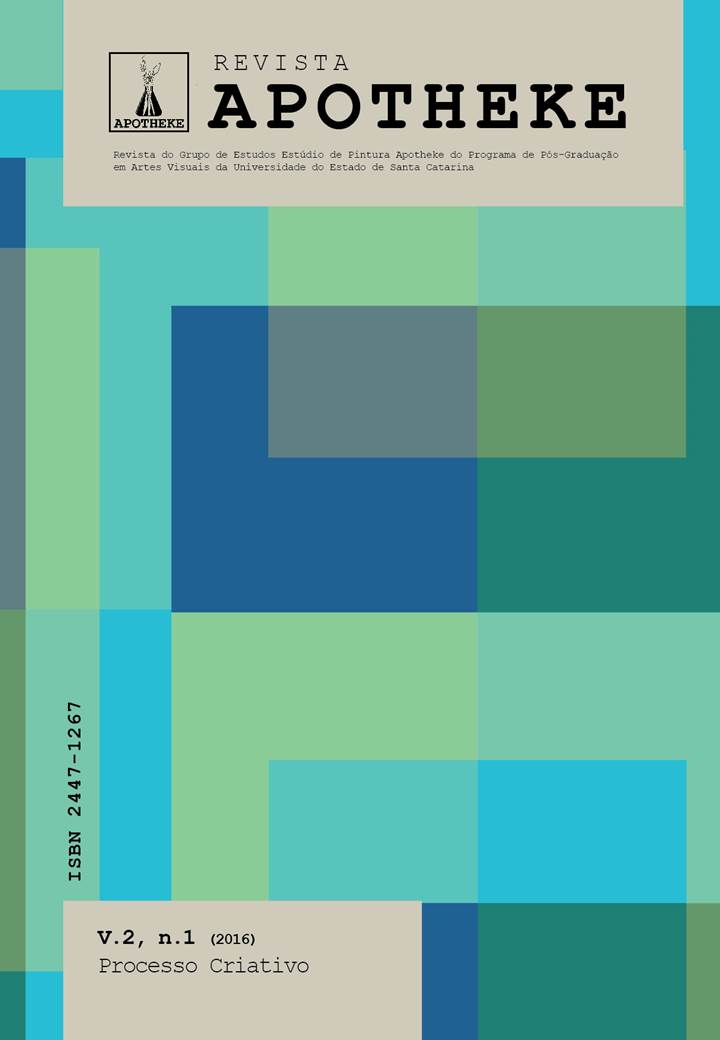O PENSAR CRIATIVO - O PROCESSO CRIATIVO E O ENSINAMENTO DAS CORES
DOI:
https://doi.org/10.5965/24471267212016214Palabras clave:
Criatividade, Cor, ensinoResumen
Este texto relata uma experiência no aprendizado sobre cores realizada na disciplina intitulada Fundamentos da Cor do curso de Design de Moda do CEART/UDESC no ano de 2012. O grande desafio estabelecido na disciplina foi ensinar os conceitos básicos relativos a cores, suas características, usos, círculo cromático e esquemas harmônicos. No começo da disciplina foram estabelecidas as tarefas e o aporte teórico o qual envolveu o processo criativo e o ensinamento das cores através de exercícios desenvolvidos em sala de aula. Este texto demonstra uma breve apresentação do trabalho desenvolvido no semestre.Descargas
Citas
ALMEIDA, N. F.; SEMINERIO, F. L. P. Cognição e Emoção: a importância do imaginário para a metacognição e a educação. In. LIBÂNEO, J. C.; SANTOS, A. (Org.) Educação na era do conhecimento em rede e transdisciplinaridade.S. l.]: Alinea, 2005.
DEWEY, J. Experiência e educação. Tradução: Anísio Teixeira. S. l.]: Companhia Editora Nacional, 1971.DEWEY, J. Meu credo pedagógico. In. D’ÁVILA, Antônio. Pedagogia. São Paulo: Companhia Editora Nacional, 1954.
KNELLER, G. F. Arte e ciência da criatividade.5. ed. São Paulo: Ibrasa, 1978.MINSKY, M. A sociedade da mente.Rio de Janeiro: Francisco Alves, 1989.
MUNARI, B. Diseño y comunicación visual.Barcelona: Gustavo Pili, 1975.
PREDEBON, J.Criatividade-abrindo o lado inovador da mente:um caminho para o exercício prático dessa potencialidade, esquecida ou reprimida quando deixamos de ser criança. 2. ed. São Paulo: Atlas, 1998.
RIBEIRO, C. Metacognição: um apoio ao processo de aprendizagem. Psicologia: Reflexão e Crítica, online] v. 16, n. 1, p. 109-116, 2003. Disponível em <http://www.scielo.br/pdf/prc/v16n1/16802.pdf>. Acesso em 26 out. 2015.
SCHLOCHAUER, C. Desenvolvimento da criatividade em estudantes universitários:uma análise de estratégias de ensino. 2007. Projeto de pesquisa para processo de seleção (Doutorado em Psicologia Escolar e do Desenvolvimento Humano) –Universidade de São Paulo, São Paulo, 2007. Disponível em <http://cappf.org.br/tiki-download_wiki_attachment.php?attId=37>. Acesso em 28 fev. 2011.
TAYLOR, C. W. Criatividade:progresso e potencial. 2. ed. São Paulo: Ibrasa 1976.
Descargas
Publicado
Cómo citar
Número
Sección
Licencia

Esta obra está bajo una licencia internacional Creative Commons Atribución-NoComercial 4.0.
Política de Derechos de Autor y Licenciamiento
Los autores de los trabajos enviados a la Revista APOTHEKE autorizan su publicación en formato impreso y digital, exclusivamente con fines académicos, pudiendo ser reproducidos siempre que se cite correctamente la fuente. Los autores certifican la originalidad, autoría y carácter inédito de sus manuscritos.
Los artículos publicados por la revista están disponibles gratuitamente y destinados a fines académicos y no comerciales. Todos los derechos de autor son cedidos a la revista. Los artículos firmados representan exclusivamente la opinión de sus autores y no reflejan la posición oficial de la Revista Apotheke. Los autores se comprometen a citar la publicación original siempre que reproduzcan, divulguem o hagan referencia al artigo publicado en la Revista Apotheke, de la siguiente forma:
“Este artículo fue publicado originalmente por la Revista Apotheke en el volumen (colocar el volumen), número (colocar el número), en el año (colocar el año), y puede ser consultado en: http://www.revistas.udesc.br/index.php/APOTHEKE/index”
Es responsabilidad exclusiva de los autores obtener autorización por escrito para el uso de cualquier material protegido por derechos de autor incluido en sus artículos. La Revista Apotheke no se responsabiliza por eventuales infracciones cometidas por sus colaboradores.
Los autores conservan los derechos de autor y conceden a la revista el derecho de primera publicación, bajo la licencia Creative Commons de tipo Atribución-NoComercial (CC BY-NC):
-
Atribución (BY): Los licenciados pueden copiar, distribuir, mostrar, ejecutar y crear obras derivadas, siempre que se otorgue el crédito correspondiente al autor o titular de la licencia, en la forma indicada.
-
Uso No Comercial (NC): Los licenciados pueden usar el material solo con fines no comerciales.
Después de la publicación, los autores conservan sus derechos de autor y pueden volver a publicar el texto.



